Bricks are the popular units for the construction of masonry walls in the building, and usage of bricks with mortar is a great art of construction. With the advancement of time, the art or technique of brick masonry has also become advanced. Brick masonry is produced by laying the brick layers which are constructed by putting the bricks in flat pattern and bonding all that bricks with cement mortar. Bricks layers are laid on the top of one another and in plumb to built up durable brick masonry wall. Here we discuss the construction of the brick masonry and precautions in relation to brick wall construction.

01. What are the Specification Used for Brick Masonry Construction?
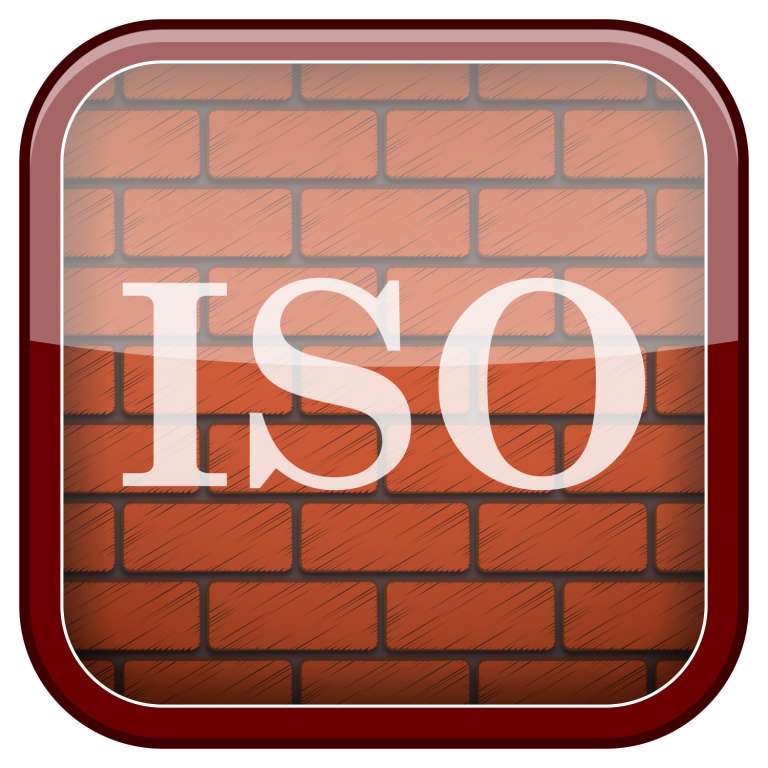
Here are the lists of brick masonry specifications as per the American, British and Indian standards.
American Standards:
- ACI 530-02/ASCE 5-02/TMS 402-02: Building Code Requirement for Masonry Structures
- ICC 2000: The International Building Code 2000
New Zealand Standards:
- NZS 4230: Part 1:1990 Code of Practice for the Design of Concrete Masonry Structures
European Standards:
- Eurocode 6: Design of Masonry Structures
Indian Standard (BIS Codes):
- CPWD specification book (Vol. I), Chapter-6
- IS 1950: Code of practice for structural use of unreinforced masonry
- IS 4326: Code of Practice for earthquake resistant design and construction of building
- SP 20: Handbook on masonry design and construction
- IS 3495: Methods of test for burnt clay building bricks
- IS 2212: Code of practice for brick work
- IS 2250: Code of practice for preparation and use of masonry mortar.
- IS 3414: Code of Practice for Design and installation of joints in buildings
- IS 3696 Part 1: Safety code for scaffolds and ladders
- IS 1077: common burnt clay building bricks
- IS 2691: Specification for burnt clay facing bricks
It is necessary to check whether all the materials conform to the specifications as prescribed in contract document or drawings. Use of low-grade sub-standard materials (like bricks, cement, sand, and water) in inappropriate ratio can affect the quality of construction.
Most of the standard manuals have specified the qualities of construction materials and procedure or test to check the quality of the building materials.
Learn More:
How do I Check the Qualities of a Good Brick?
How do I Check the Quality of Sand at the Site?
How do I Check the Quality of Cement at the Site?
The Quality of Water Used on the Construction Site:
The qualities of water which is used on the construction site is basically a potable water. It should have good pH value (Between 6.5 to 7.5). Percentage of alkalis should be in limit. The water must not be salty in taste. In the case of small work quantity, salty water must be treated with 10 ml of Hydro Chloride solution for 100 liters of water.
The maximum concentration level of TDS set by EPA (The United States Environmental Protection Agency) is 500 mg/L. The World Health Organization (WHO) has prescribed an acceptable limit of 500 mg/L, and as per Bureau of Indian Standards (IS: 10500) guidelines, 500 mg/L is the desirable limit and 2000 mg/L is the permissible limit. It means potable water having TDS more than 2000 mg/L must be rejected.
Water should be free from suspended matter and vegetable. It should be tested by visualisation. It is advisable to test water in the laboratory, as salty water is not recommended for construction.
02. What are the Sequences of Works carried out Before Starting the Brick Masonry Construction?
For RCC Framed Structures:
- RCC work of ground floor top slab must be completed. The damp proof course should be laid on RCC plinth beam (ground beam) before starting the ground floor brick In the case of upper floor brick masonry, you should complete the RCC work of upper floor top slabs first.
- In the case of small jobs, it is advisable to do masonry first and then carry out the concrete pouring of the slab.
This will have following Advantages:
- The separation cracks occurring between joint of RCC column and wall as well as bottom of RCC beam and the top layer of walls can be permanently avoided, which is a big headache if not done properly.
- The contractor will not need formwork in form of beam bottom for supporting beams.
- You need not wait for removal of props for 14/21 days. You can immediately start plaster work on removal of slab props after 7 days. Of course initially, it will take the time to do masonry work but at last, it saves time.
For Load Bearing Structure:
- Compaction of soil and PCC work must be completed before starting foundation brick
Learn the difference between the RCC framed structure and load bearing structure.
03. Which Standards are Used to Test the Quality of the Materials in Brick Masonry Construction?
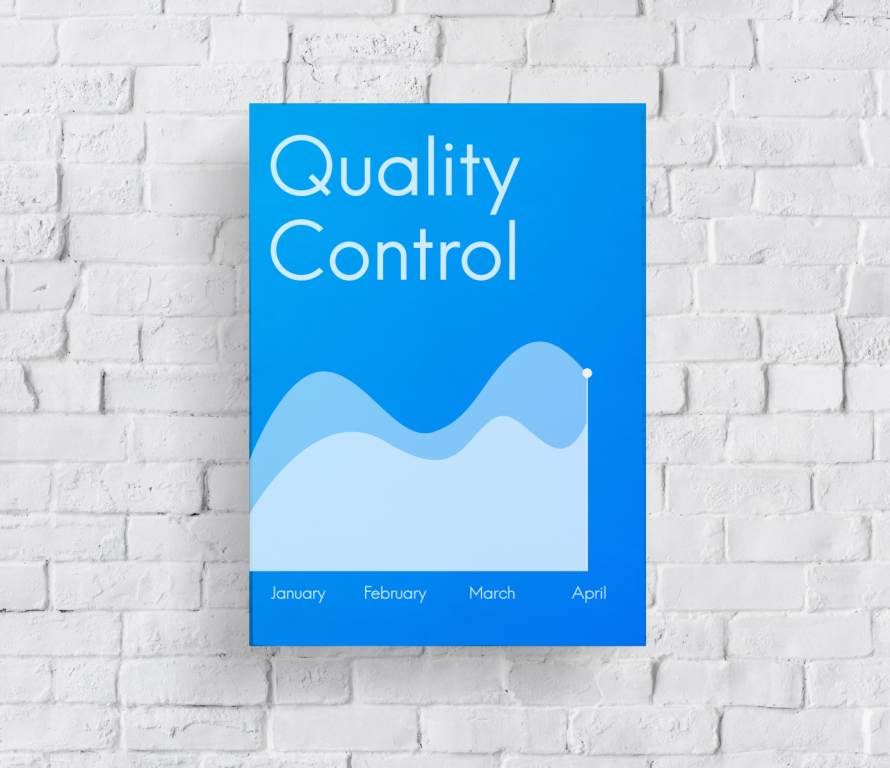
Here are the lists of tests for the quality assurance of the brick masonry for the materials like bricks, sand and cement as per the American, British and Indian standards.
(a) Bricks Test:
American Standards for the Bricks Testing:
- ASTM C 62-89a: Standard Specification for Building Brick (Solid Masonry Units Made from Clay or Shale)
- ASTM C67: Standard Test Methods for Sampling and Testing Brick and Structural Clay Tile
British Standards for the Brick Testing:
- BS EN 772-1:2011: Methods of test for masonry units. Determination of compressive strength
Indian Standard for Brick Testing:
- IS 1077-1976: Common burnt clay bricks
Bricks must be tested for Compressive Strength Test as per standard, and it should not be less than 35 Kg/Cm2.
Bricks must be tested for Water Absorption Test as per standard, and the absorption should not be greater than 20%.
Bricks must be tested for Efflorescence Test as per standard, and it should be within the moderate limit.
Also Read: AAC Block vs Red Bricks: How to Make the Right Choice
(b) Cement Test:
American Standard for Cement Testing:
- ASTM C270: Specification for Mortar for Unit Masonry
British Standards for Cement Testing:
- BS EN 1015–2:1999: Methods of test for mortar for masonry: a Bulk sampling of mortars and preparation of test mortars.
- BS EN 1015–11: Methods of test for mortar for masonry: Determination of flexural and compressive strength of hardened mortar
Indian Standards for Testing Cement:
- IS 460-1962: Indian standard specification for test sieves
- IS 269-1976: Indian standard specification for ordinary rapid-hardening and low heat Portland cement
- IS 8112-1989: Indian standard 43 grade ordinary Portland cement specification
- IS 12269-1987: Indian standard specification for 53-grade ordinary Portland cement
- IS 650-1966: Indian standard specification for standard sand for testing of cement
Cement must be tested for Fineness Test as per standard, and the percentage of cement-retained sieve shall not more than 10% by Volume, and specific surface area shall not be less than 2250 sq.cm/gm.
Cement must be checked for Soundness Test as per standard, and the expansion shall not be more than 10mm or 0.8%.
Cement must be checked for setting time test as per standard, and initial setting time should not be less than 30 minutes and final setting time should not be more than 600 minutes.
Cement must be checked for Compressive Strength as per standard. Following table shows the minimum strength requirement of cement mortar cube.
Grade of Cement | Minimum Compressive Strength (Kg/cm2) | ||
| After 3 Days | After 7 Days | After 28 Days | |
| 33 Grade | 160 | 220 | 330 |
| 43 Grade | 230 | 330 | 430 |
| 53 Grade | 270 | 370 | 530 |
(c) Sand Test:
American Standards for Sand Testing:
- ASTM C 33: Standard Specification for Concrete Aggregates
- ASTM C 29: Standard Test Method for Bulk Density (“Unit Weight”) and Voids in Aggregate.
British Standards for Sand Testing:
- BS EN 998–2: Specification for mortar for masonry: Masonry Mortar
- BS EN 1015–2: Methods of test for mortar for masonry: Bulk sampling of mortars and preparation of test mortars
Indian Standard for Sand Testing:
- IS 2386-1963: Methods of Test for Aggregates for Concrete
Sand should be checked for Fineness Modulus as per standard, and fineness modulus must be range between 2.6% to 3.6% for concrete work, 1.6% for plastering work and 3% for masonry work.
Sand should be checked for Silt Content by weight as per standard, and silt content must not exceed 4% by weight.
Also, Read How to Perform Bulking Test for Fine Aggregate (Sand) and the Lab Tests on the Aggregate.
04. How to Manage the Stock of Material in Brick Masonry Construction?
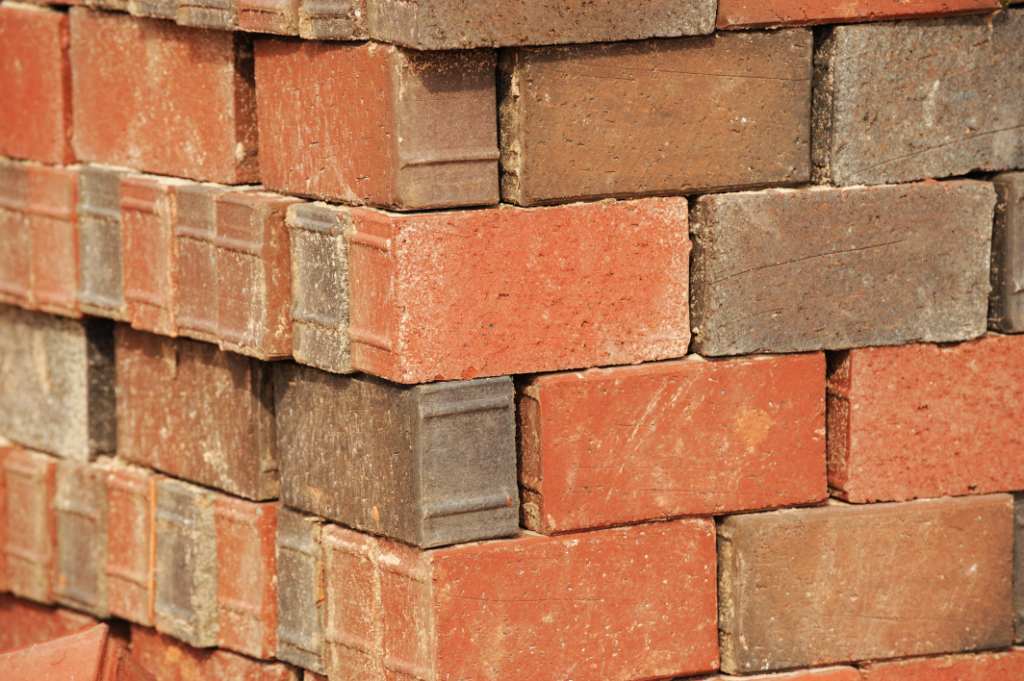
- Brickwork is generally measured in volume. The quantity of brickwork is measured in the cubic meter of volume. It is measured by multiplying length, height and thickness of the wall.
- The materials (Bricks, Cement, Sand, and water) should be stocked in sufficient quantity to sustain the brickwork for at least a week. When materials stocks are at the bottom line, the purchase order should be placed well in advance before commencing brick
- The approximate materials used for 230 mm brickwork in C:M 1:6 is 60 Kg cement, 380 Kg sand and 450 to 500 Nos bricks per cubic meter of brick The approximate materials used for 230 mm brickwork in C: M 1:4 is 90 kg cement, 350 kg sand and 450 to 500 Nos bricks per cubic meter of brick masonry.
Learn how to Store Cement Bags in Godown.
05. Which Tools and Machinery are used for the Construction of Brick Masonry?

- Assure that you have all the plants, machinery and equipment for successful completion of brick wall construction.
- Mixing of mortar should be done with mechanical mixing, and hand mix should be allowed only for small works. The proportion of mortar should be consistent. Mortar should be prepared on impervious (surface or GI plate or MS plate) plate specially made for the purpose or on concrete or brick surface.
- M.S/bamboo scaffolding material and sieving screens should be available at the site before commencing the brick masonry.
- A set of tools comprising of wooden straight edges, mason’s spirit level, square half meter rub, pins, string and plumb should be available on the site of work for frequent checking during the progress of brick wall construction.
- The material transporting machine should be calibrated at regular intervals.
06. Which Precautions should be taken for the Scaffolding of Brick Masonry?
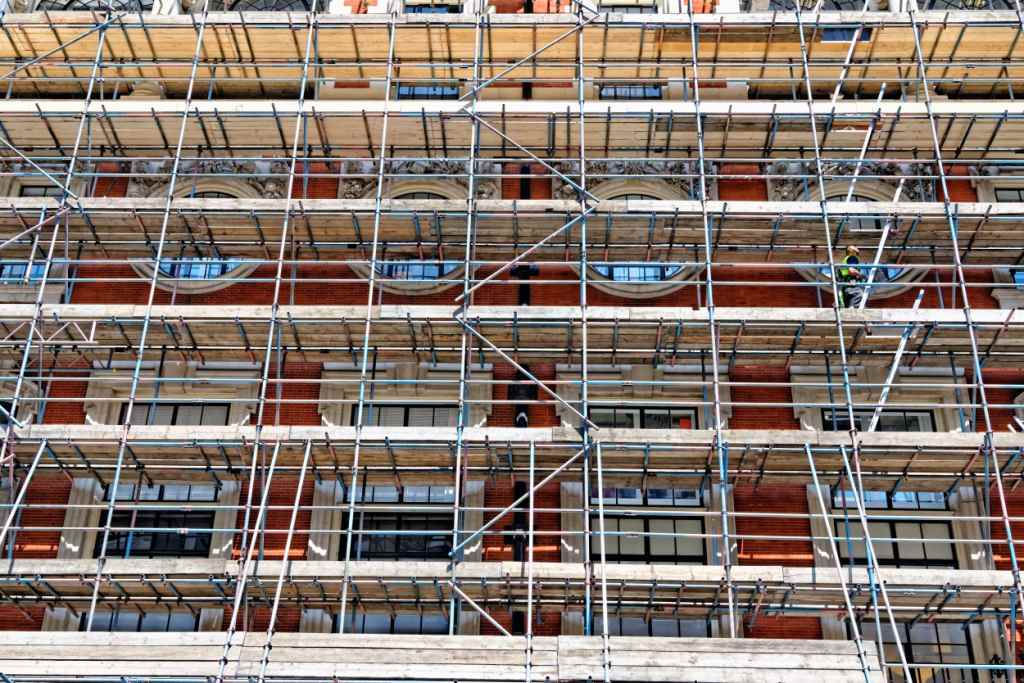
Proper steel/bamboo scaffolding must be done for brickwork more than two-meter in height for the interior brick masonry walls.
The safety net should be provided on the exterior periphery on each floor for high rise buildings.
In the case of the external periphery, it is advisable to make double scaffolding with two sets of vertical supports for brickwork. It must be independent of brick masonry, the i.e. hole should not be made in walls for supporting horizontal member of scaffolding, as later they became the source of leakage/dampness in the wall.
07. Which Precautions should be taken for the Integration of Services in Brick Masonry?
Integration of services like HVAC ducts, electrical conduits, and plumbing lines must be checked and installed before commencing the brick masonry whenever needed. If the Grooves, sleeves, and chases are shown in the drawing, they should be constructed in right line, level, and position or as directed by the engineer. The sleeves should slope outward in external walls so that the surface cannot form channels of water and hence chances of leakage shall be minimised.
08. Which Precautions should be taken during the Workmanship of Brick Masonry Construction?
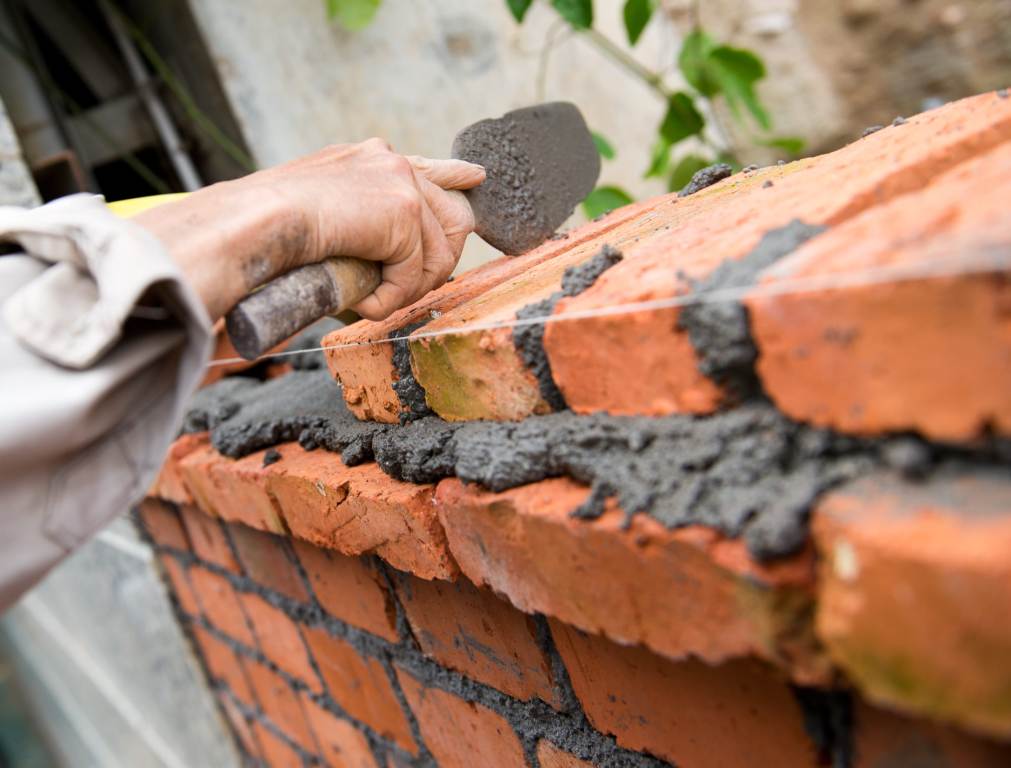
- Sand should be screened through the sieve, and the bricks should be soaked in water for 24 hours before using for the first course. If needed wash the sand.
Also Read: Crushed Sand vs. Natural Sand
- Proportioning of cement mortar should be as per specification drawing. It must be used within 30 minutes of adding water. Water should be added as prescribed in the specification.
Also Read about readymade mortar
- The layout of the first layer of brick masonry should be checked with architectural and structural working drawing and dimension must be thoroughly checked.
- Queen closers (Brickbats) should be used at a junction of a wall. Brick masonry must be in exact plumb, level, and all layers should be horizontal. The frog should be in an upward position.
- Fixing of doors, windows or door frames, window frames should be in exact plumb and with required holdfasts. The frame should be duly painted with one coat particularly on the underside meeting masonry wall.
Also Read: Precautions while Wooden Doors and Windows Installation
- The rise of brickwork (wall height being constructed in daytime) at a daytime should not exceed more than 1 meter in height every day.
- Thickness Of horizontal and vertical cement mortar joints should not be more than 10 mm. Tolerance allowed in thickness should be within +/- 20%.
- The raking of mortar joint must be done on vertical and horizontal joints, and on both faces. In a case of exposed brick masonry raking is not required.
- The filling of approved material ( like aggregate pressing in the mortar between slab beam and last layer brickwork mortar or construction joint chemical between RCC and brickwork joint) in Junction should be completed.
To know why it is necessary read separation cracks between RCC and masonry joints.
- Work quantity and quality must be checked day to day. Work done, labour and material consumption should be recorded daily.
09. Which Care should be Taken after Completion of Brick Masonry Work?
- The cleaning of doors, windows and its frame is must at the end. The cleaning of floor area is also must at the end of a day.
Also Read: Different Types of Doors
- Brickwork must be curedfor at least 7 days. Curing is very important in construction.
10. Which are the Safety Precautions Taken During the Brick Masonry Construction?
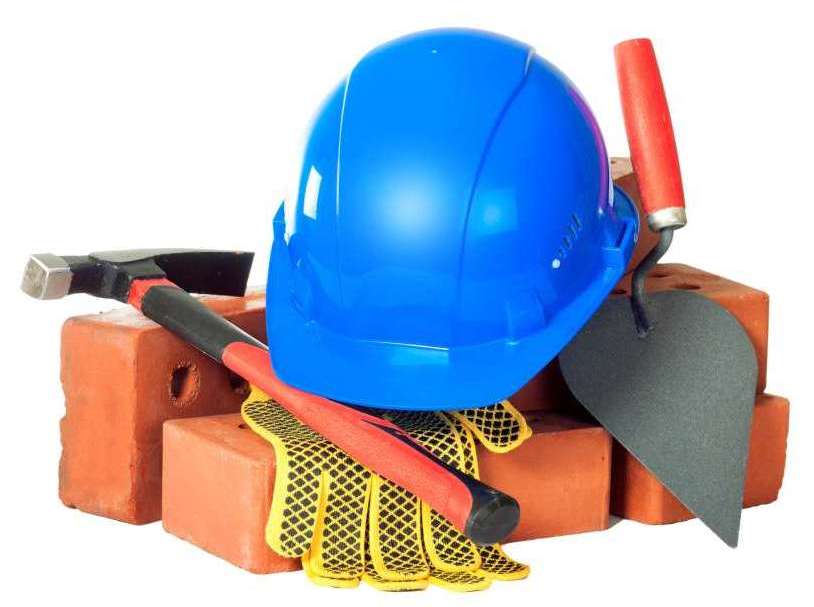
- Method Statement for Brickwork (method of handling, placing and cleaning of materials) must be prepared before carrying out work. The workers of Brick masonry must be skilled and experienced.
- Ensure that all safety measures (Safety helmet, safety belt, facemask, Rubber hand gloves and Rubber shoes) are provided and wore while handling, placing and cleaning of brickwork
- First-Aid kit should be easily available on site or nearby place where brick masonry is being carried out.
- Carry out trial brickwork on small areas before the main operation is to start.
- Ensure proper ventilation and electric lights when brick masonry is to be carried out in a confined space or a dark place.
- Machine operator must be skilled, and license must be obtained from recognised agency otherwise, chances of accidents are likely.
11. Which are the Health Checks while Brick Masonry Construction?
- The worker who works with dry cement is subject to the maximum health hazards. They should be checked for health at least once in a month. The health of workers should be checked up by the doctor at regular interval of 6 months, and the proper record should be maintained.
- Cleaning and housekeeping of materials are necessary to reduce health hazards.
12. How to Manage or Minimise the Wastage of Brick Masonry?
Wastage should be minimised by carefully unloading the materials at the site. You should appoint skilled persons, who very well follow the standard practices of construction and methods. Waste management training should be organised at regular intervals on site. One should try to reuse waste or recycle it, and if not reusable, it should not be disposed to landfill site but donate it for some low-value jobs.
13. Which Precautions should be Taken for the Bad Weather while Brick Masonry Construction?
The contractor must adopt the safeguards (like shades, polythene, tarpaulins) measures to work in all season. The cost of these precautions shall be deemed to be included in the Contractor’s rate. Work should not be carried out in the case of heavy cold or rain. Finished work should be protected by sacking, tarpaulins or insulating.
14. How to Measure the Brick Masonry?
The thickness of brick masonry walls shall be measured in nominal brick sizes and rates shall be for unit rate for the complete work as specified in the IS 1200 – 1976: Method of Measurement of Building and Civil Engineering Works, unless any particular portion is specifically excluded in the Schedule of Items and work.
The masonry contractor prepares the method statements of brick masonry work based on the above precautions. It will help them to manage the masonry worker. It will also help them in timely completing of brick masonry work. The homeowner needs to know all the tips related to brick masonry so they can deal well with the masonry contractor. If the homeowner knows all above given tips of brick masonry, they will get the full satisfaction of the work by achieving the good quality brick masonry.